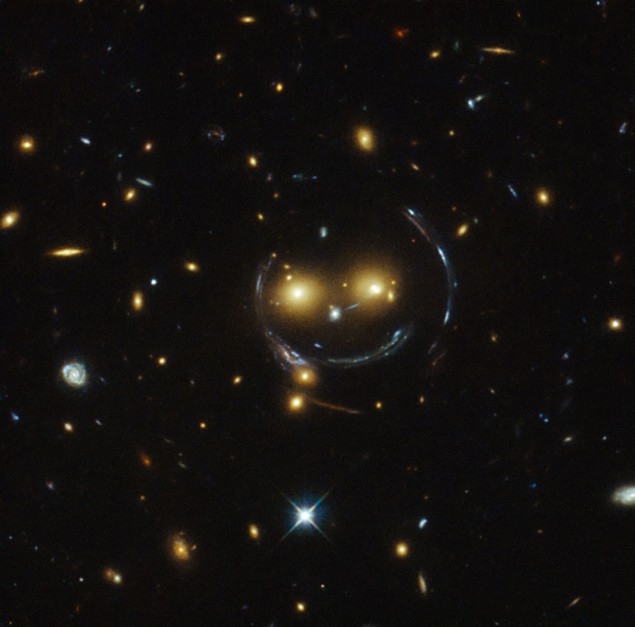The Hubble Space Telescope was launched on 24 April 1990. To celebrate its 30th anniversary in space, Physics World is publishing a series of blog posts exploring Hubble’s 10 best images, as chosen by the science journalist and editor Keith Cooper

Gravitational lensing – the ability of a large mass to bend the path that light takes through the space around it – is surely one of Albert Einstein’s most dramatic predictions. Nowhere is this phenomenon demonstrated better than in Hubble’s many images of galaxies (and clusters of galaxies) that act as cosmic gravitational lenses, magnifying and bending the light of far more distant objects.

Hubble’s best shots: The Helix Nebula
In this image, the smiling face is a happy coincidence of line-of-sight alignments and gravitational lensing. A galaxy cluster catalogued as SDSS J1038+4849 includes the two orange elliptical galaxies that make up the face’s eyes, which bend and magnify the light of a more distant background galaxy. In fact, the lensing alignment is so perfect that the path the light takes through space is bent enough to form a partial Einstein ring, which is the arc of light forming the face’s beaming grin.



